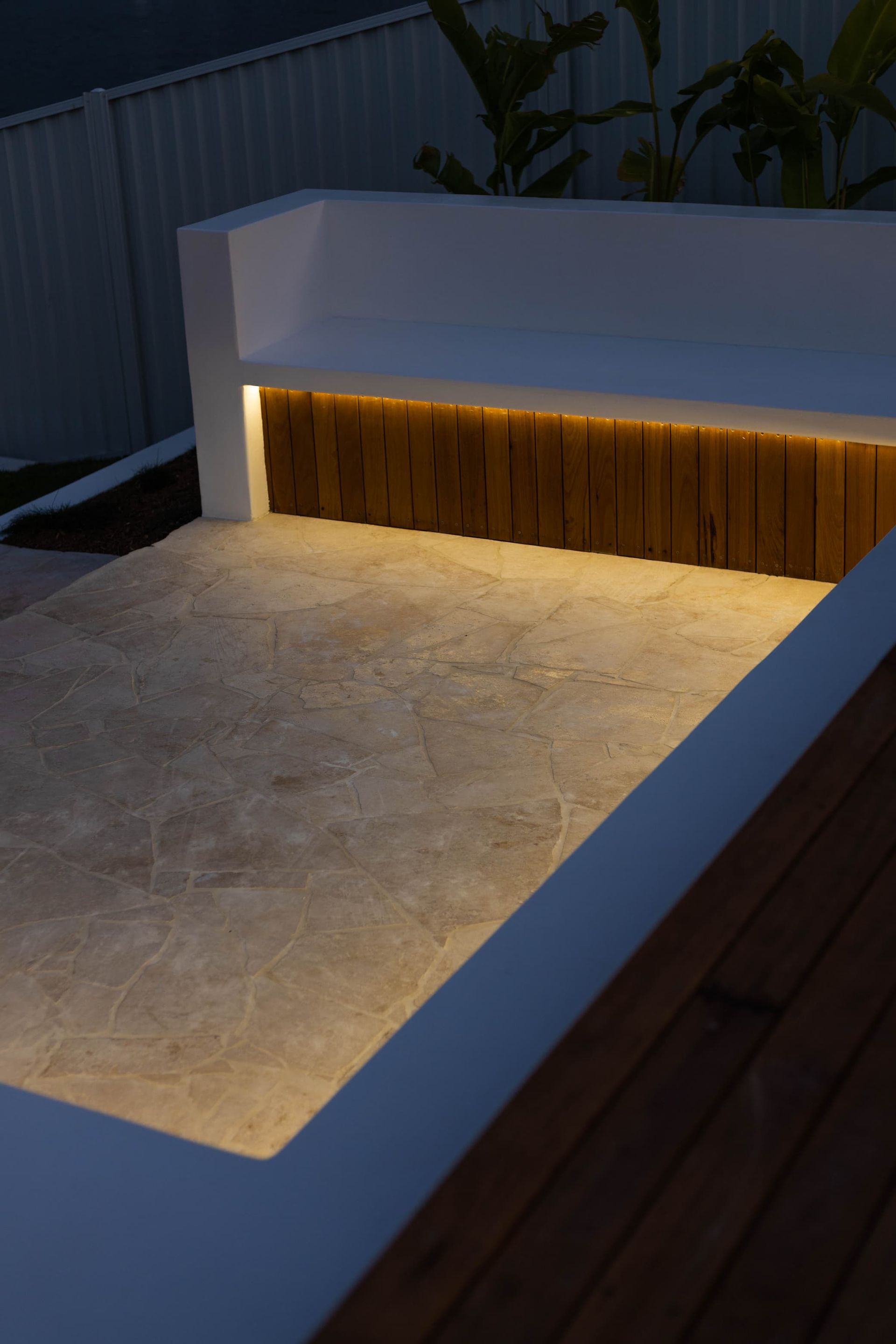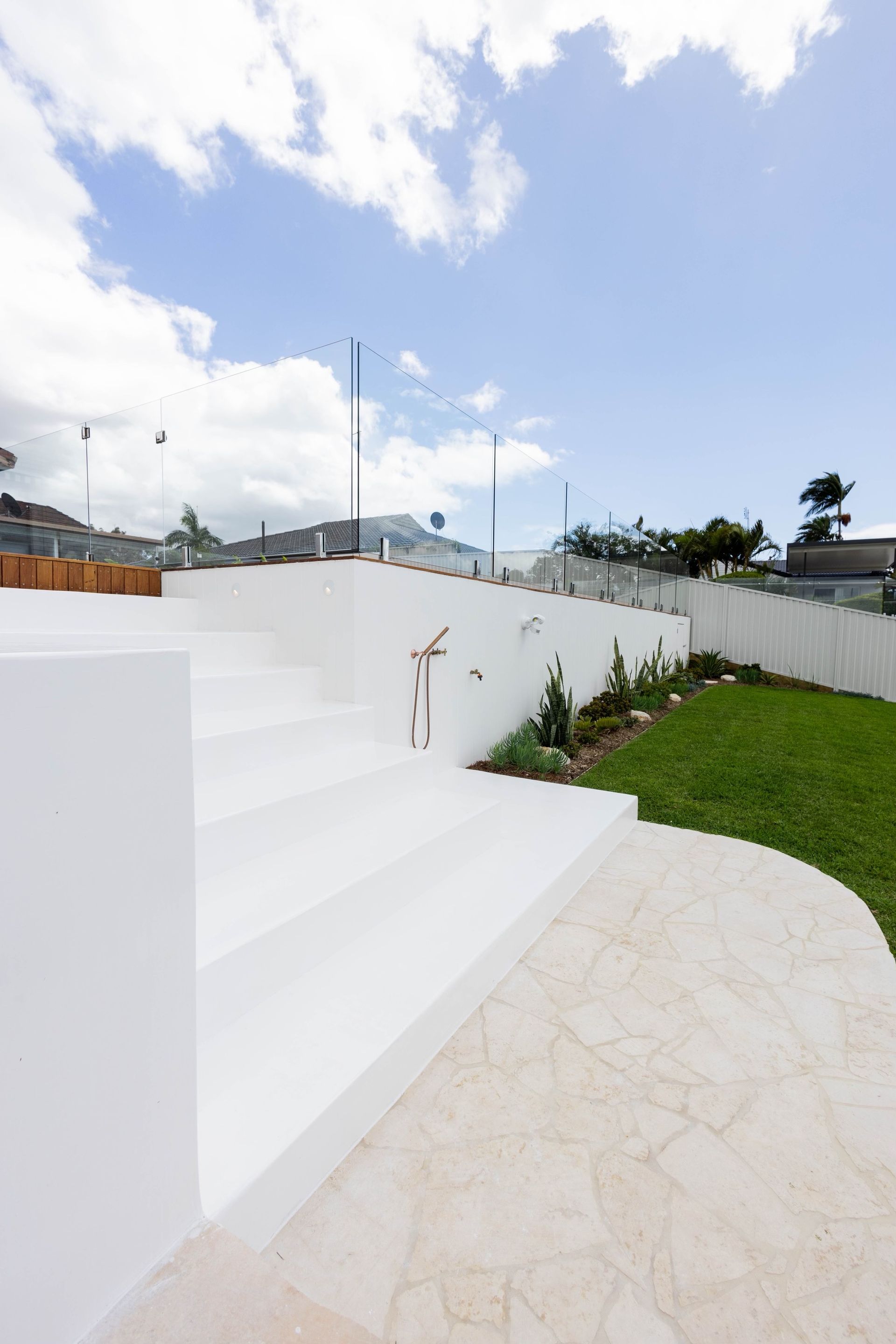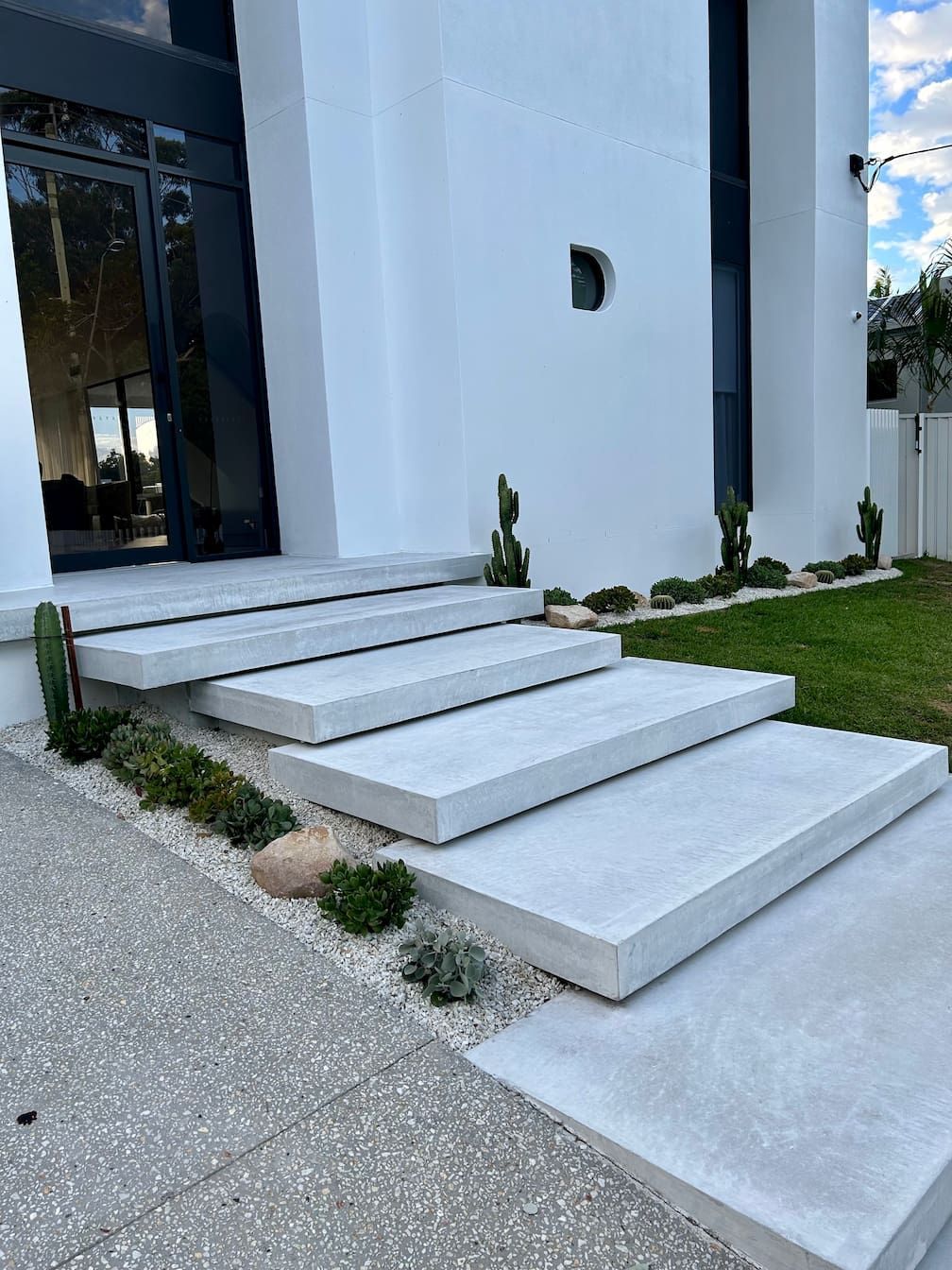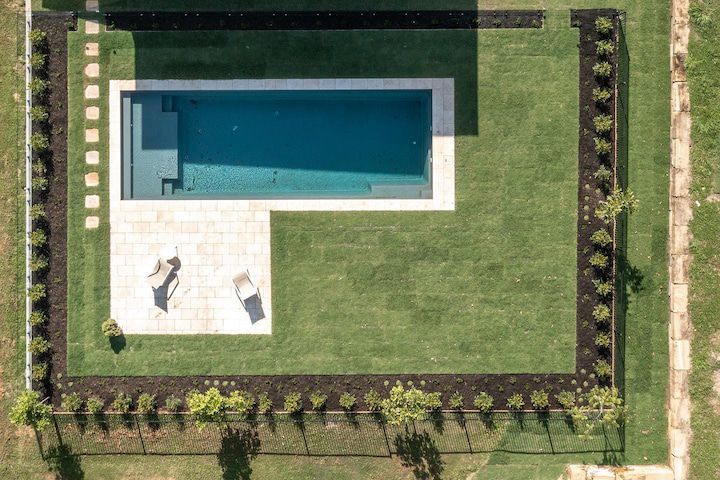Different Types of Retaining Walls: Your Comprehensive Guide
From preventing soil erosion to providing shape and structure,
retaining walls are a great way to add function, aesthetics and value to your property. These visually appealing landscape features can be built using an extensive range of materials and serve various applications. In this blog, we’ll explore the most common types of retaining walls, the various materials, costs, regulations and much more.
Stone Retaining Walls
Stone retaining walls are a highly popular option because of their natural appearance, durability and ability to blend in with the surrounding landscape. In terms of design, stone retaining walls are typically built using the dry-stack method, however more detailed masonry work can improve the overall appearance. Stone retaining walls are commonly built using the following materials:
Sandstone: Known for its robust and weather-resistant properties, sandstone offers a classic and often earthy aesthetic, making it suitable for various outdoor settings.
Bluestone: A versatile and durable stone that is available in a range of sizes and shapes, offering a unique and sophisticated appearance.
Fieldstone: With its naturally occurring shapes, fieldstone provides a rustic and organic aesthetic, often used in cottage or country-style landscapes.
Limestone: Recognised for its light colour palette and durability, limestone is often used in more formal and structured wall designs.
Concrete Retaining Walls
Concrete retaining walls are a testament to strength and durability, providing a solid and reliable barrier against soil and water. They are often utilised in scenarios where a substantial amount of soil needs to be retained. Concrete walls can be precast into various designs or poured on-site, offering a range of customisation options. Despite their robust nature, concrete walls can be moulded and textured to mimic different materials, providing versatility in design while maintaining structural integrity.
Block Retaining Walls
Block retaining walls, particularly those made from concrete blocks, offer a blend of aesthetic appeal and structural integrity. They are modular, making them highly adaptable to various designs and are often used in both residential and commercial landscapes. Block walls can be engineered to accommodate curves, corners and other unique design elements, providing a versatile solution for complex landscaping needs. With the ability to be rendered or clad in various finishes, block walls can seamlessly integrate into various design themes.
Types of Block Retaining Walls
Link Blocks: Known for their interlocking design, link blocks facilitate easy installation and provide a stable structure.
Rendered Block Walls: These walls can be coated with a smooth render, providing a sleek and modern aesthetic, which can be painted to suit various colour schemes.
Gabion Retaining Walls
Gabion retaining walls are characterised by their use of wire mesh to create cages filled with rock or stone and offer a distinctive aesthetic and functional drainage capabilities. They are commonly used in settings where water flow management is crucial, as the gaps between the stones allow water to pass through, reducing hydrostatic pressure.
Gabion walls can be integrated into various landscapes, providing a contrast of industrial and natural aesthetics, and can be used in both flat and sloping terrains.
Timber Retaining Walls
Timber retaining walls have been a popular choice for residential landscapes for many years. Often built from treated pine, hardwood or sleepers, timber walls provide a cost-effective and environmentally friendly retaining solution. They can be integrated into various outdoor settings, including gardens, patios and pathways, offering a soft and natural contrast to the surrounding vegetation. Timber walls can be designed to suit both straight and curved boundaries, providing flexibility in design and application.
Boulder and Rock Retaining Walls
Boulder and rock retaining walls showcase the natural, rugged beauty of large stones to create stable and durable retaining structures. These walls can be built using locally sourced boulders or specially selected rocks, providing a range of aesthetic options. Boulder walls can be integrated into various landscapes, from rustic country settings to modern minimalist designs, offering a timeless and durable retaining solution. They are often used in locations where the natural aesthetic is paramount, as they blend seamlessly into the surrounding landscape.
How Much Does a Retaining Wall Cost?
The cost of a retaining wall can be influenced by various factors, including materials, labour, size and design complexity. Here’s a breakdown:
Materials: Different materials come with varying price tags. For instance, stone and gabion walls tend to be pricier than timber.
Labour: Professional installation can significantly impact the overall cost.
Size and Height: Larger, taller walls require more materials and labour, increasing the cost.
Design Complexity: Customised or intricate designs may necessitate specialised skills or additional materials, influencing the price.
Location: Accessibility and geographical location can also affect material and labour costs.
Permitting: Depending on your locale, permits may be required, adding to the cost.
The Benefits of Retaining Walls
Retaining walls offer a multitude of benefits across various aspects of landscaping and property management. When designed and installed effectively, these structures can enhance the functionality, safety and aesthetic appeal of outdoor spaces, providing long-term value and utility. The key benefits of retaining walls include:
- Erosion Control
- Functional Aesthetics
- Creating Usable Space
- Improved Drainage
- Enhanced Safety
- Biodiversity Preservation
- Noise Reduction
Retaining Wall Regulations on the Gold Coast
On the Gold Coast, retaining walls only require building approval if they don’t meet this specific criteria:
- They must be less than 1.0 metre high
- Positioned further than 1.5 metres from a building or another retaining wall
- Solely support the soil behind the wall, and not be part of pool fencing
Additional conditions include:
- A combined wall and fence height under 2.0 metres
- No construction over a service
- Compliance with structural requirements
- Adherence to development conditions
- Walls should not be in an easement, covenant area or a waterfront/oceanfront setback area
Conclusion
Selecting the right retaining wall involves considering various factors, including cost, aesthetics, functionality and specific spatial requirements. By understanding the attributes of each type, you can choose a retaining wall that not only beautifies your outdoor space but also endures the test of time.
If you’d like to speak to a retaining wall expert on the Gold Coast, don’t hesitate to get in touch with LGM Landscaping. We handle the entire project, including the
softscaping,
hardscaping,
landscaping and everything in between.
Get in Touch For A Free Quote











